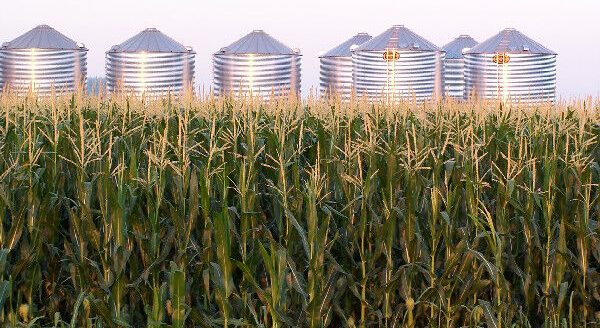Slight adjustments to corn, soy numbers in latest WASDE

The U.S. Department of Agriculture’s May 14 numbers on corn and soybean estimates didn’t change the picture too much, adjusting a few figures.
Its World Agricultural Supply and Demand Estimates raised the corn export forecast by about 100 million bushels, to a total of 2.776 billion bushels. There was no change to feed or ethanol usage for the 2020 corn crop. The WASDE reduced projected corn carryover by 95 million bushels, to a total of 1.257 billion bushels, or about 8% of expected usage. ‘That’s a pretty tight carryover compared to history,” said Jim Mintert, professor and Extension economist in the Department of Agricultural Economics at Purdue University and director of the Center for Commercial Agriculture, and close to ending stocks from 2011-13.
For the 2021 crop, the USDA stuck to the same projected yield of 179.5 bushels per acre it suggested in February, meaning a total production of just under 15 billion bushels, although some experts questioned that figure as too high, Mintert said.
Total projected exports for the 2021 crop were down 12% from 2020, possibly reflecting expectations that Brazil would increase its exports this marketing year. Whether Brazil’s weather will cooperate remains to be seen. Ending stocks for the 2021 corn crop were estimated at 1.5 billion bushels, or 11% higher than 2020 ending stocks. If this projection holds, ending stocks at the end of the 2021 marketing year would be 10% of usage. But Mintert noted that production forecasts changed “dramatically” over the course of last year.
Ethanol usage was forecast at 5.2 billion bushels, or 5% higher than 2020’s usage, undoubtedly reflecting expectations of increased driving as COVID-19 restrictions ease.
On the foreign side, the WASDE reduced Brazil’s expected corn production by about 275 million bushels, as well as increasing China’s expected imports by 80 million bushels.
Bridge closure
The WASDE numbers didn’t reflect price fluctuations as a result of the closure of the Hernando de Soto Bridge in Memphis Tennessee, which carries I-40 between Tennessee and Arkansas. The closure caused a temporary shutdown of river traffic. By the time that river traffic was reopened May 14, after a 6-day river closure, more than 1,000 barges were waiting, mostly full of corn and soybeans. According to Mintert, the temporary shutdown stranded 29 million bushels of corn and more than 4 million bushels of soybeans. About one-third of the 2020 export corn crop remains to be shipped.
The bridge itself could remain closed to vehicle traffic for months as a major crack in a supporting girder is repaired. The Arkansas Department of Transportation bridge inspector who should have reported the crack was fired, according to news reports, after examination of drone footage from prior years showed it clearly visible.
Ethanol margins
Mintert said ethanol margins remain “pretty positive”—about $0.14 cents per gallon, despite the high corn prices. Compared to a year ago, ethanol production is up by more than 50%, as production recovers from the pandemic. But compared to 2019, total ethanol production is still 7 to 8% below that last “normal” year.
The impact on travel, commuting and fuel usage of the recent relaxation of some restrictions by the states and the Centers for Disease control as more people get vaccinated remains to be seen.
About two-thirds of the 2021 crop is planted, according to Michael Langemeier—similar to 2020. Soybean plantings, as well, are on track with 2020 and “considerably ahead” of the 5-year average. Corn plantings showed a big increase in the Dakotas, however, which could be at increased risk of drought conditions this year. This is one of the factors causing some to question the USDA’s corn yield projections for the 2021 crop. Northwest Iowa is also abnormally dry, said Langemeier.
Tight soy stocks
As with corn, the May 14 WASDE figures were mostly unchanged for soybeans. Carryover was projected at 120 million bushels, or about 2.6% of usage—"about as tight as you can go,” said Mintert—with a projected total yield of just over 50 bushels per acre—high, but not a record. Soybean ending stocks were slightly raised to about 140 million bushels, about 20 million bushels higher than in 2020.
For the 2021 crop, the USDA estimated just over 50 bushels per acre, giving a total projected yield of 4.4 billion bushels, up 7% from 2020. Soybean crush was projected at 2% over 2020 numbers.
The USDA raised estimates of Brazil’s soybean harvest by 24 million bushels.
Regarding dry weather and its effect on Brazil’s soybean crop, “the consensus appears to be that it affected Brazil’s second corn crop much more,” said Mintert.
While the pace of U.S. soybean exports has slowed, as attention shifts to South America, total exports are still up by 65% since 2019, with China responsible for much of that increase.
Soybean ending stocks, at about 3% of usage, followed last year’s ending stocks of 2.6 % of usage. This continued tightness is “very unusual,” said Mintert, and suggests continued strong support for soybean prices.
David Murray can be reached at [email protected].



